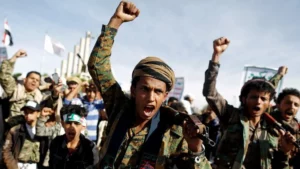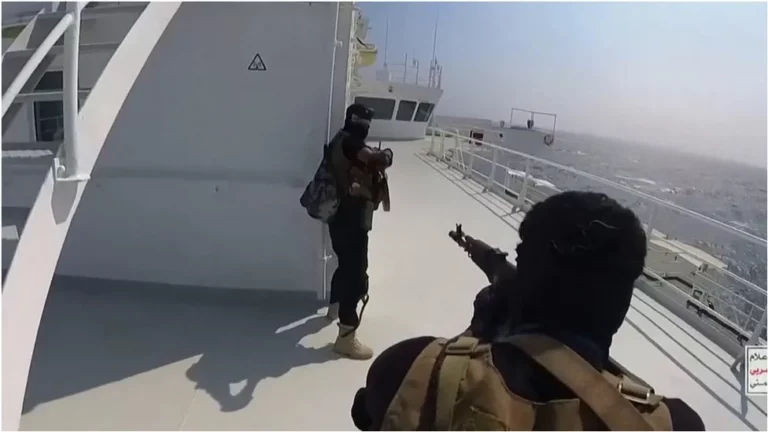NIN365 Desk, Kolkata : In a tumultuous saga on the high seas, the Red Sea becomes the battleground for a global coalition led by the US and UK against Houthi rebels. Striking over 60 targets, the precision assault aims to curb Houthi threats, echoing concerns about rising attacks on commercial vessels and the ensuing impact on global trade routes.
The roots of this maritime crisis extend beyond Yemen, reaching into the ongoing Israel-Hamas conflict. The Houthi rebels, backed by Iran, pledged support for Hamas and vowed to target ships heading to Israel. Amid these geopolitical tensions, the Red Sea witnessed a surge in Houthi attacks, compelling major shipping companies like Mediterranean Shipping Company and Maersk to reroute vessels, causing a tenfold spike in insurance costs.

The fear of disrupted supply chains and rising fuel prices looms large, given that almost 15% of global seaborne trade traverses the Red Sea—a vital conduit linking the Mediterranean to the Suez Canal. Against this backdrop, the multinational coalition’s decisive strikes seek not only to neutralize immediate threats but also to safeguard the economic lifelines of nations across the globe.
Washington accuses Iran of orchestrating Houthi operations against commercial vessels, citing deep involvement. The Houthis, an armed group from Yemen’s Shia Muslim minority, the Zaidis, have been fighting a civil war since 2014. The conflict, fueled by geopolitical alliances and fueled by Iran’s support, has left a devastating toll—377,000 deaths and four million displaced, according to the UN.
The Houthi rebels, part of the Iranian-led “axis of resistance,” model themselves after Hezbollah in Lebanon. The US claims extensive military support and training from Hezbollah since 2014, adding a layer of complexity to the conflict. While Iran denies involvement in the Red Sea attacks, the accusations persist, with the US asserting that Iranian intelligence is pivotal in Houthi operations.
The strategic significance of the Red Sea showdown lies not just in the military strikes but in the delicate diplomatic dance that follows. President Joe Biden’s measured response emphasizes protection without escalation, underscoring the challenge of balancing regional stability and global security. The strikes, employing a range of weaponry from US Navy warships to UK Royal Air Force Typhoons, depict a collaborative effort to secure vital waterways.
As the Houthi rebels remain defiant and geopolitical tensions simmer, the international community grapples with the aftermath. The Red Sea saga epitomizes the fragile state of global politics, where maritime conflicts have far-reaching consequences. The coalition’s actions aim not only to protect against immediate threats but also to send a resounding message—a united front against those who seek to disrupt the interconnectedness of our world.
In conclusion, the Red Sea crisis illuminates the intricate tapestry of geopolitical complexities, where maritime security and economic stability intersect. The multinational coalition’s response becomes a beacon of global unity, resonating with a youth society that envisions a world where cooperation triumphs over conflict. As the waves of uncertainty settle, the Red Sea stands as a testament to the resilience of nations working together to navigate the stormy seas of an ever-evolving geopolitical landscape.
DISCLAIMER
Our news media denounces any form of bias and disapproves of sensationalism. The disseminated news is entirely educational and aimed at social awareness. Our media maintains absolute impartiality, adhering solely to the purpose of education and social consciousness.


